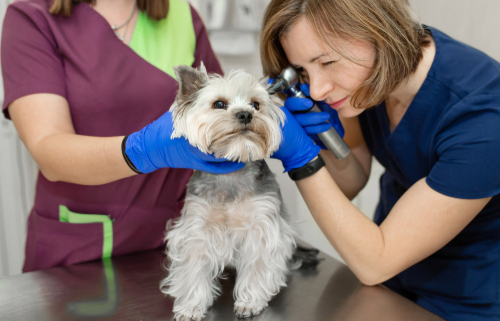Congenital Deafness
Did you know that dogs may experience deafness just as us humans do? It may be a sure sign if you call their name and they do not come to you or shake a treat bag and they do not react. It may be more common for older dogs to lose their hearing, but what happens if your young dog has issues hearing? Continue reading to find out more about the causes of hearing loss and what you may be able to do about it.
Congenital deafness is inherited in young dogs via the genes from their parents. Insufficient melanin can lead to improper ear development as well. Melanin is a very important part of the development of the dog’s ear structures. Keep in mind that there are certain dog breeds which may be more prone to developing congenital deafness. Dalmatians are the most highly affected breed. A study concluded that 15 to 30% of Dalmatians are deaf in one ear while 5% are deaf in both ears.
What are the symptoms of congenital deafness? It may be difficult to spot it right away, especially if the dog is young. Deaf puppies do not respond to the same sounds that other puppies do. Think about knocks on the door, squeaky toys, and whistling. Your veterinarian may be able to help you determine if your pup is deaf by performing simple tests to see if they can elicit a response.
Unfortunately, it is not possible to prevent congenital deafness from occurring and this is the reason why dogs who are deaf should not be bred. No need to worry though. Many deaf dogs go on to lead normal lives, and there are generally no additional underlying illnesses when it comes to congenital deafness. All these dogs need is a little extra training and a lot of love!



